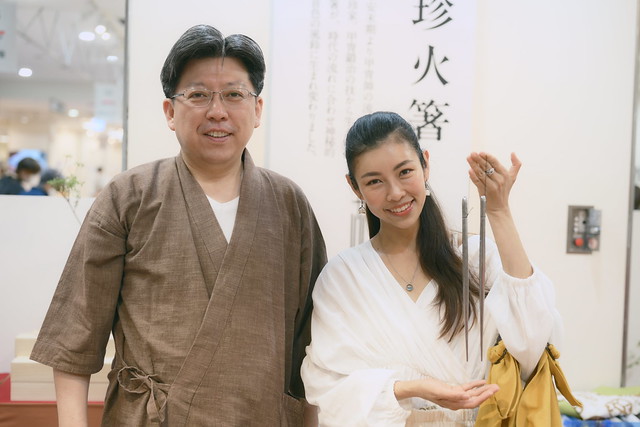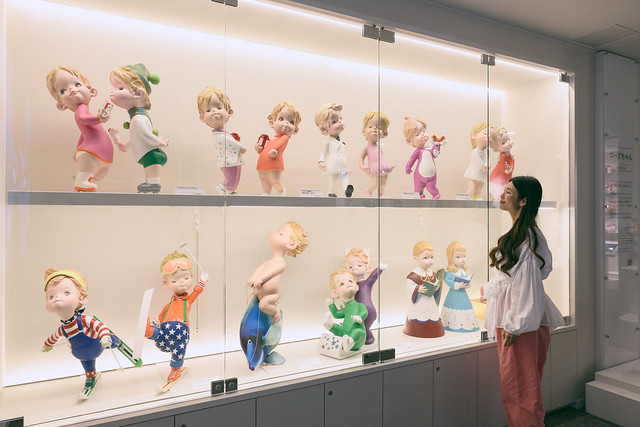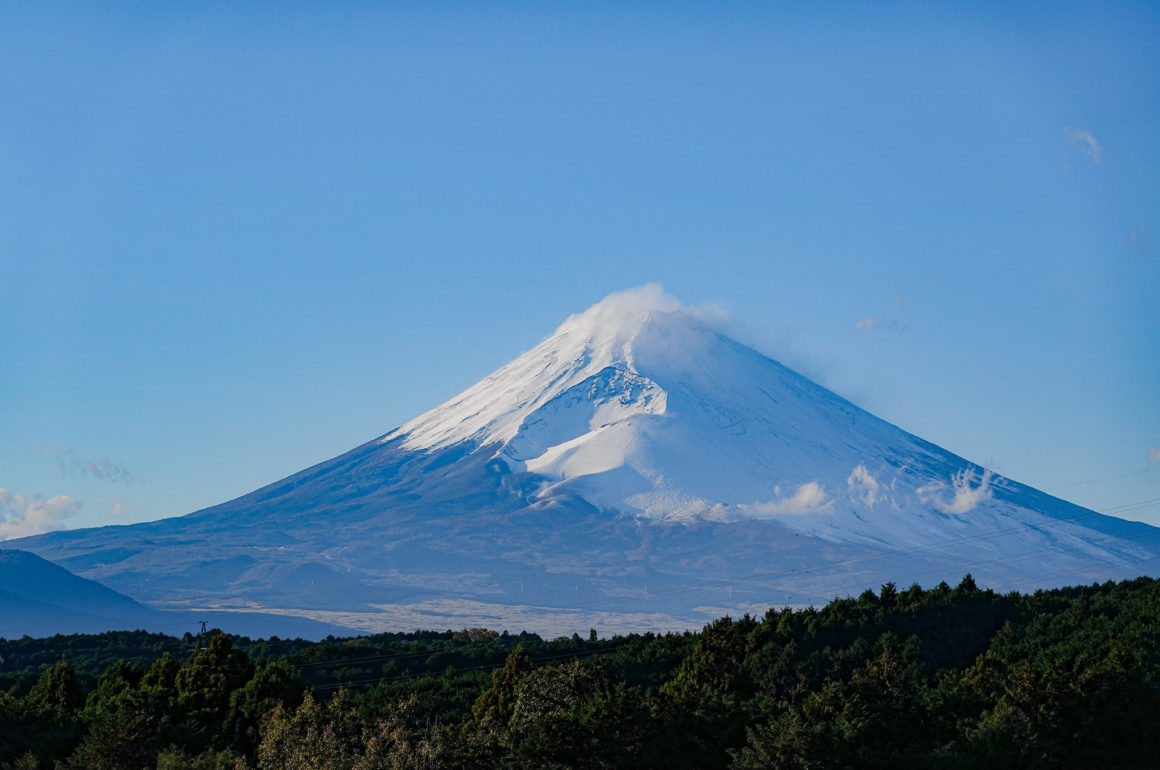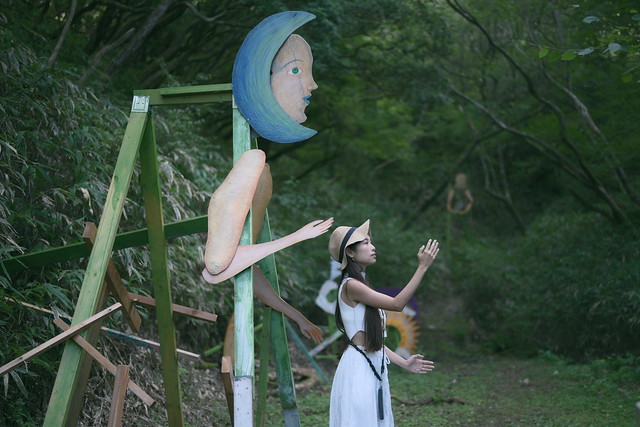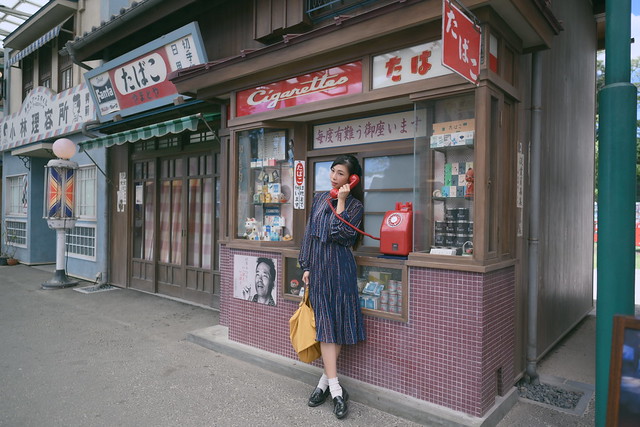
Okay, honestly? This post is going to be a little overwhelmingly lengthy, because I will be introducing 3 different passes from three different railway companies for those of you who intend to travel to the Kansai area of Japan.
But stay with me here and I hope it will be a worthwhile read for you to make the best out of your next Japan trip!
In this blog post, we are focusing on the Kansai area of West Japan. While I believe all of you are familiar with the classic route to conquer Osaka, Kyoto and Nara, there’s so much more to explore within the Kansai region with just a couple of train rides.
Today I am devising a 5-day itinerary that brings you to the mandatory cities of Osaka, Kyoto and Nara, then further venture into the Ise Shima area of Mie prefecture as well as Kobe city of Hyogo prefecture.
The 3 passes we will be using are
1.Kintetsu Rail Pass plus (5 days)
2. Hanshin Tourist Pass (1 day)
3. Hankyu Tourist Pass (2 days)
Starting from Osaka!
For those who don’t fancy moving around with luggage, it would be wise to make Osaka your home base for the trip, and go on day trips and back.

My partner in crime this time is Chanwon, we have been to Ehime and Okayama+Tottori together!
I arrived at Shin Osaka early in the morning, placed my luggage at Sheraton Miyako Hotel Osaka (more about that later), and met Chanwon to start our journey to our first destination – Asuka, Nara.
The first rail pass that we will be using is the Kintetsu Rail Pass Plus (5 days) at only JPY4800!

Kintetsu (近鉄) runs along the Kinki Region, from Osaka to Kyoto, Nara, Ise Shima (Mie), and even all the way to Nagoya!
With this pass, you can get 5 days of unlimited rides on of course all Kintetsu Line, Iga Tetsudo Line, Nara Kotsu Bus, Mie Kotsu Bus and Toba Kamome Bus services in the Ise-Shima area. If you are planning to see Nara Mie or Nagoya, I’d recommend getting this rail pass!
DAY 1: NARA 奈良
Asuka 明日香
Nearest Station: Asuka Station, Kintetsu Railway Yoshino Line.

Asuka is a very interesting place. The official Kanji for this area is “明日香”, however the station name is “飛鳥”, and both kanji are pronounced the same – “ASUKA”. It is believed that the different kanji are used for the distinction between the village (明日香) and the era (飛鳥).
Bear with me a little here as I feel compelled to explain a little. If you know a little about this history of Japan, you would have known that before Edo (now Tokyo) was made the capital city of Japan, Heian-Kyo (now Kyoto) served the role for over a thousand years. But not many know that Nara was actually the first ever capital city from year 710-794, called the Nara Period (奈良時代).
And the 200 years before that was called Asuka Period (飛鳥時代), a very significant period for Japan with the arrival of buddism and the change of the name of the country from “Wa” (和) to “Nihon”(日本), and also, it is the home for the first emperor of Japan – the birth place of imperialism of Japan.
This is how historically rich and important the small village of Asuka is, although at present day it is just a very slow-paced, relaxing agricultural village that is the epitome of “rural Japan”.
Asuka Bike Rental
I absolutely recommend renting a bike to get around! You can rent a bike at JPY1000 at Asuka Station, but I’ll tip you for this – just pay JPY500 extra for an electric version. You’ll thank me for it. You are welcome.

Love love love the ride. It reminded of of many scenes from Ghibli anime with old-fashioned bike rolling down the hill along swaying rice paddies, and lots and lots of free, young spirits.
There are many attractions in the area such as the Asukadera Temple (飛鳥寺), Ishibudai Tombs (石舞台古墳), Asuka Historical museum and even an onsen!
Tucked right in the middle of Asuka, this stylish cafe was once a sake brewery over 200 years ago. Now it is the local’s most popular lunch hangout with their one-plate lunch featuring healthy dishes.

A wholesome, hearty meal to nourish you for the entire day.
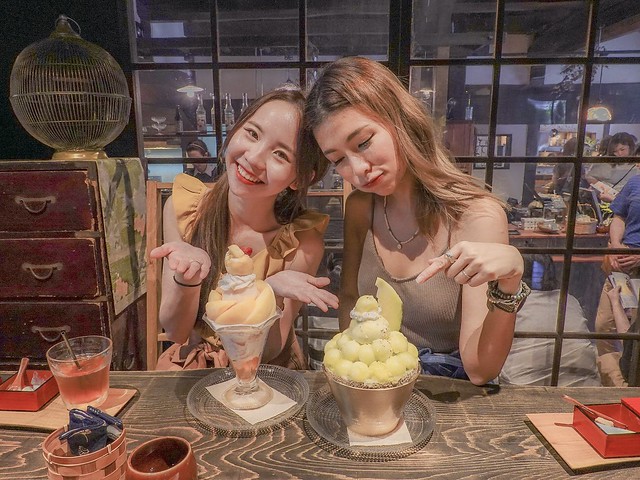
In summer time, don’t miss their amazing kakigoori (shaved ice) overloaded with fresh fruits! My goodness the serving was so massive I recommend sharing! I suspect they used at least half a small melon in ONE kakigoori, and it was only JPY1300 omg mindbown. The peach parfait was extremely satisfying I don’t even have better words for it. Just… please try it.

Old streets around the cafe make good photo spots too.
Nara Park
Nearest Station: Kintetsu-Nara Station, Nara Line
If it’s your first time to Nara, it is of course recommended you visit the top attraction of the prefecture – Nara Park.

Take the limited express to Kintetsu-Nara station – it is the nearest and most convenient station to access Nara Park as it is just a 5-min walk away.
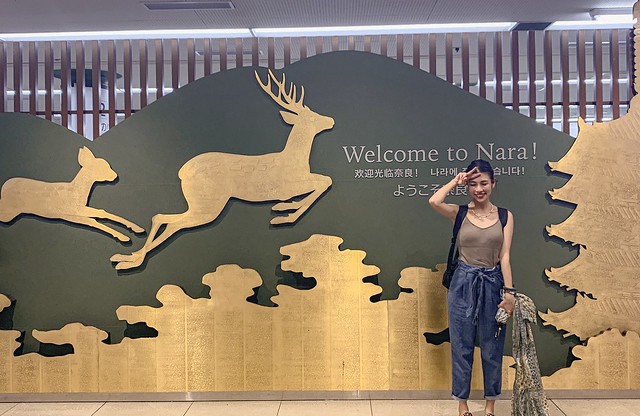
The last time I was in Nara was over 10 years ago during my first ever visit to Japan. Glad to be back.
Waplus Kimono Rental
To complete your yukata/kimono dream, you can rent one at Waplus, starting from JPY3780 (inc. tax).

I picked a bright color yukata in kiku (chrysanthemum) print and Chanwon had hers in pastel morning glory. Which one do you like?
The deers

The deers are adorables and heck they even bow to you for a yummy treat, but just a reminder to everyone who visit – some of you might have seen the news of 9 deers who died of being overfed plastic. The park carer found 4KG of indigested plastic inside the stomach of one of the deers.
The deers are cute and hungry and a little greedy, but please do not feed them anything other than the “deer senbei” sold at the park. No paper, no brochures, absolutely no plastic or rubbish. Please be kind to the deers who made Nara Park the well-adored Nara Park.
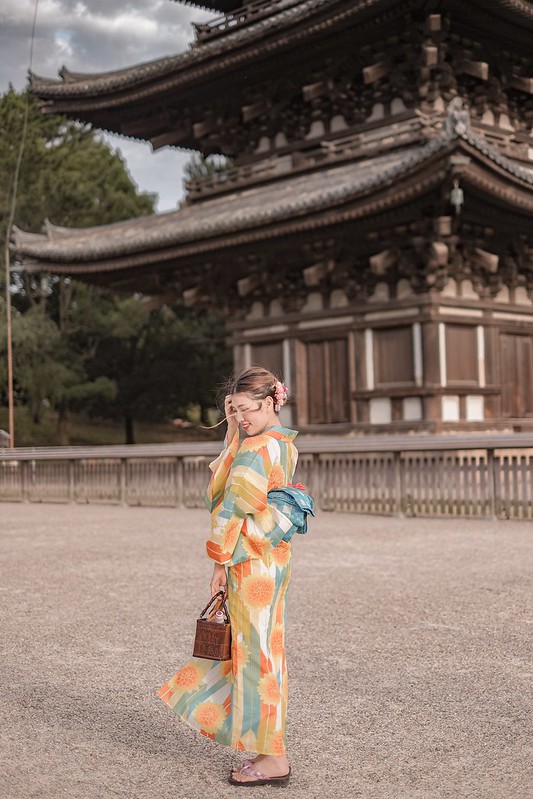
Kofukuji (興福寺), with no tourist in sight (at least in this photo). I know many Japan enthusiasts avoid the summer for their travel plans because of the heat, but it is also exactly because travelers hesitate to visit during this season that we get to enjoy tourist-free attraction, especially a super famous one such as this.
Nara Tokae 奈良燈花会
By the time you read this the event would have been over, but this beautiful lantern festival happens yearly from Aug 5-14, so the next time you are in town for summer, don’t forget about this event!

Photo taken at Ukimido (浮見堂), a floating pavilion at the park, with the vicinity decorated with thousands of candlelight lanterns lit up one by one by local volunteers.

It’s very romantic! So it makes a good dating spot too.
Sheraton Miyako Hotel Osaka
Nearest Station: Uehonmachi Station

We returned to our accommodation for the night – Sheraton Miyako Hotel Osaka located right at Uehonmachi Station.

As long as there’s space for me to open my luggage fully, I consider the hotel spacious in Japanese standard haha. This hotel – it is enormous – for my standard.
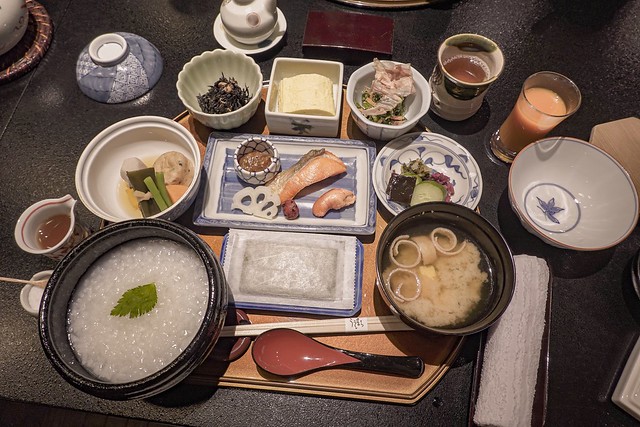
Hotel breakfast is satisfying too.

It is also ultimately convenient as you can take the Kintetsu bus right to Kansai Airport. Just a note – your Kintetsu Rail Pass Plus lets you ride all the bus in Nara and Mie, but not in Osaka, so do remember that.
DAY 2 – ISE SHIMA
Ise Jingu
Nearest Station: Ujiyamada Station, Yamada Line
Off to the most sacred shrine in the whole of Japan.
Ise Shima is in Mie prefecture, about 2 hour away from Uehonmachi Station. Take the Kintestu Line to Uji Yamada Station (宇治山田駅), and get on the bus bound for Ise Jingu shrine.

Go to bus stop no.1! You may use your Kintetsu Rail Pass Plus for free bus rides from Uji Yamada, just show the ticket to the driver when you get off the bus. I was a little confused as I am so used to taking buses in Tokyo – you go in the front door, show/buy your ticket and get off at the center door in Kanto region, but here in Kansai it is the opposite – get in from middle door and alight at the front door while you pay.
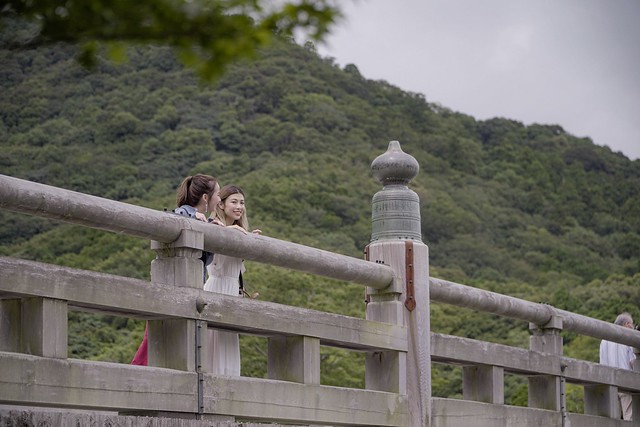
This was my second visit to Ise Jingu. The first time was in 2017. You can read about it here.
This is the sacred bridge which is said to bring you into the divine realm from your daily human world once you cross it. The bridge and the shrine are rebuilt every twenty years as a part of Shikinen Sengu (式年遷宮) – a renewal ceremony that has been conducted for over 1300 years without a break. This custom of repeated rebuilding renders the shrine eternal. The latest Sengu ceremony was done in 2013.

I went overboard buying amulets for myself, family and friends.

Isuzu river. People in olden days cleanse themselves here before entering the main shrine.

Longevity tree in Naiku (Inner shrine) which is over 400 years old.
Also, it is said that Ise Jingu is not a place to make personal wishes, as the shrine is so powerful that it is way beyond trivial individual whims. For centuries, thousands of rituals are conducted here yearly to bless the prosperity of the Imperial family of Japan, general public happiness and peace for the world.
Visitors come to Ise Jingu to pray with appreciation, give thanks and express gratitude, and if you have your own personal wishes, you can purchase omamori (amulets) from the shrine or visit the detached shrine “Takanomiya”.
Toba 鳥羽
Nearest Station: Toba Station
Come to Toba Station on Kintestu Line for some coastal activities!

Toba is the coastal city of Mie and it’s famous for its aquarium, Mikimoto Pearl Island, and ama divers.
We are going to visit the Ama divers at Ama Hut Hachiman.
Ama Hut Hachiman

Ama Hut Hachiman offers tour packages to this humble little “hut”, which includes free shuttle bus from Toba station.
This activity was such a highlight of my trip that I feel compelled to feature it in a separate blog post. In fact I will return to Mie end of the month and I will visit another Ama Diver hut, so I’m hoping to give a more in-depth narrative of my experience. But here’s the gist.

Ama (海女) are traditional female divers who have been carrying this diving tradition for thousands of years in the local waters of Japan, especially in Toba & Shima region.
I first knew about Ama from the drama “Amachan”, aired in 2013 featuring the super adorable Nonen Rena.

Once you arrive at the hut, they will serve you freshly caught seafood of the day (sadly no sea urchin was harvested that day, I was so looking forward for my karazuki-uni!!!), you then put on the ama costume and dance with them and listen to their stories.
An ama is trained since she is a child, taught by their mothers or other elder ama, they free-dive without any gear or water tank even in this modern day.
An ama dives for all sorts of seafood including shellfish, abalone, uni (!!!), lobster and especially Ise Ebi (ise lobster) in this region, as well as for pearls (hence the strategic location of Mikimoto Pearl Island), and assorted seaweed. They go 5-10 meter deep, and each free-dive is about 1 minute, and they do this for over a hundred times a day for all the seafood.
An ama also dives for life.

This is Reiko, the queen of ama at Ama Hut Hachiman. She is 87 this year.
Reiko started her ama career when she was 10 and only retired 7 years ago when she turned 80. So she has a 70-year experience as an ama diver. Honestly, I think she will champ any olympian free-divers any time!

There’s a Reiko figurine made specially as an omamori (amulet) for blessing of good health because Reiko knows no sickness and is fit and healthy as a young lady. I’m not even joking. I looked at the way she smiles, walks and engages with her guests ever so energetically, I felt so ashamed that an almost 90-year-old granny has a younger spirit than me.

Her hand-sewn apron that says “welcome”.

Guess what?? I was told that the ama tour is really popular among Malaysians, so they actually made a prayer room for their guest!!
What is this level of omotenashi?? T___T. When I posted this on my IG, one of my muslim followers said that this is the cleanest and comfiest prayer room she has seen, even compared to the ones in our own country. it’s equipped with aircon, a mirror, slippers and of course places to wash hands and feet.
The best thing?
The entire experience – including the most delicious seafood lunch, free shuttle bus to and fro, and lots of heart-to-heart conversations with some of the friendliest, wisest and strongest women in Japan – all for JPY3500. I bet a lunch of the same quality in Tokyo is going to cost as much.
Super recommended! I can’t wait to be back in Sep!
DAY 3: OSAKA
Abeno Harukas 300
Nearest Station: Abenobashi station, Kintetsu Minami Osaka Line.
Guiltily, I admit that I did not make enough effort to tour Osaka – I am such a Tokyo girl – but the visit to Abeno Harukas 300 blown me away (not literally, luckily, as you can literally hang over the cliff of 300m high at the outdoor deck!!).

Unobstructed view of the urban sprawls of Osaka!

I don’t understand why there isn’t more visitors to this amazing, stunning observation deck. Hopefully it won’t be overcrowded after this blog post HAHAHA just joking. Anyway, this skyscraper is popular during sunset and for its night view. We visited early in the morning so the crowd was minimal.

Harukas 300 is the tallest complex building in the whole Japan standing at 300m tall. (Tokyo Tower and Sky Tree are categorized as towers so they are not inlcuded.)
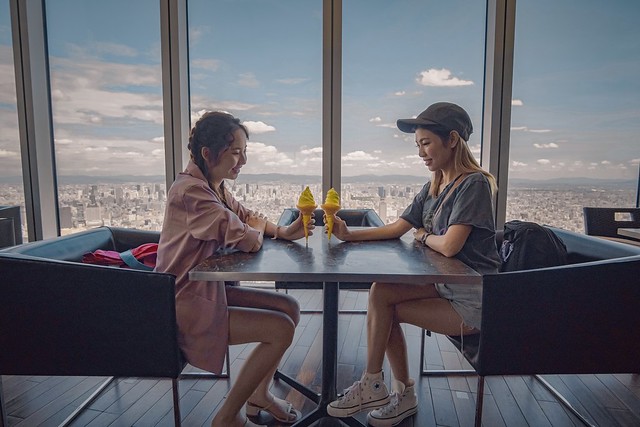
There’s a cafe a level down that serves the only “Pineapple Candy” flavored soft serve in Japan. I’ll leave it up to you to decide if it’s your cup of tea.
The entrance fee to Abeno Harukas 300 is JPY1500. And if you show your Kintetsu Rail Pass you can get your ticket at a special discounted price at JPY1350!
There are over 70 facilities that offer special benefits for Kintetsu Rail Pass holders, including 7% off on tax free prices for certain BIC CAMERA, and various entrance ticket discount, so save more while you travel with your Kintetsu Rail Pass! You can find out all the details of participating facilities over here.
KOBE
Hanshin Tourist Pass
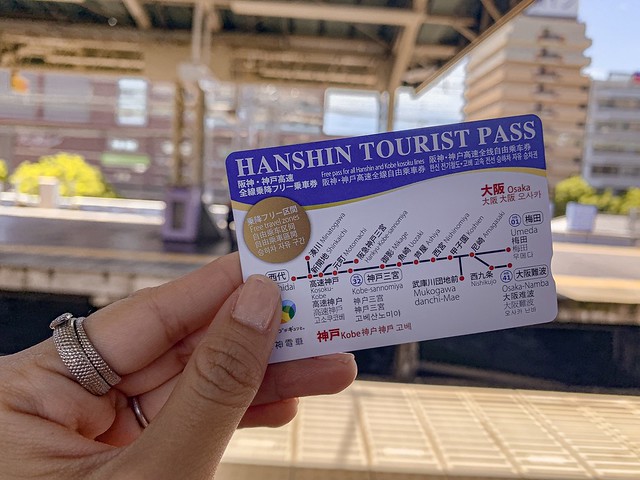
To explore Kobe, I recommend the Hanshin Tourist Pass (1 day)!
Cheesie Trivia Time! Do you know why it is called Hanshin (阪神)? HAN comes from 阪 of 大阪 (Osaka) , and SHIN comes from神 of 神戸 (Kobe). It’s a little difficult to explain as you will need to know the two different types of pronunciation of kanji – “onyomi” (音読み) and “kunyomi” (訓読み), but I’ll leave it for next time, OR, you can start picking up Japanese now. I’ll be worth it I promise!
So. This is a pass specially made for these two charming cities. This pass is extremely affordable – it’s only JPY700 for unlimited rides for the entire day and now there’s even a sweeter deal – for purchases made from now until 31 March, the ticket is only a mere JPY500!! You can purchase the ticket either online or directly at the counter.
Rokkosan 六甲山
Nearest Station: Hanshin Mikage Station
Rokkosan a mountain in the city of Kobe, Hyogo Prefecture, popular for its ski and snow park. You can find out all the recreational activities all year long on its website.

We took the cable car up the mountain…
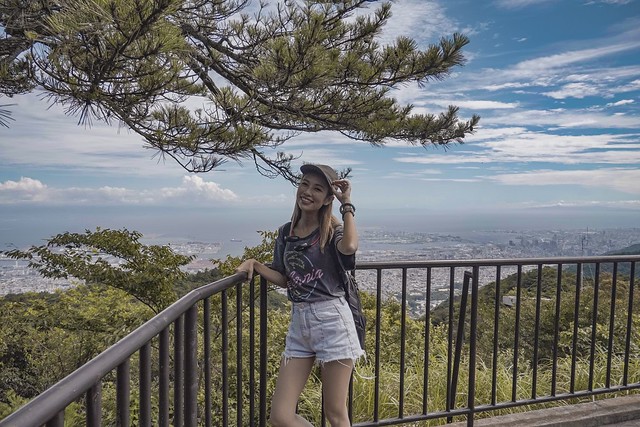
for a smashing view of Kobe and Osaka city. This is the last of my Japan’s Top 3 Scenic Night view – Hakodate, Nagasaki, and Kobe.

We then took the ski lift to the snow park.
Wait wait??
Snow??? In summer time???
Yes. Snow. In summer time.

In Rokkosan, it is possible. Originally a snow park, they made sure that visitors can enjoy it even in summer! There was a snow treasure hunt going on, where you take a spade and a bucket and start digging!! What you find under layers of snow is yours. ^^

I love all their cooling summer activities! There was also “nagashi somen”(流しそうめん) – a very fun way to enjoy your somen – by catching the fast-flowing thin noodle with chopsticks over a water slide made of open-faced bamboo. After catching the somen, you dip it in your bowl of cold dashi broth. It’s an extremely simple food but it was so delicious.
For muslim travelers, you will be glad to know that Rokkosan do offer muslim friendly facilities too!
Arima Onsen 有馬温泉
Nearest Station: Arima Onsen Station, Kobe Electric Railway
I’m so glad I made it to Arima onsen.
I’m slowly conquering all my wishlists, especially all the “Top 3 XXX” (shrines, festivals, night views, scenic views, etc etc etc). Arima onsen is consistently ranked the highest in the Japan’s Top 3 Onsen list (日本三名泉) – along with Kusatsu Onsenk(草津温泉), Gero Onseng(下呂温泉), and sometimes Dogo Onsen (道後温泉), which I have all been and all I have left now is Arima Onsen.
We took the ropeway from Rokko Sancho Station after the activities on Rokkosan, but if you are travelling from Osaka, you may take the train and the nearest station is Arima Onsen station.

Do you play “Tabi Kaeru” the traveling frog game? You will find this familiar if you do! 😉

Mini inari shrine at the onsen town.

Take a stroll along the old town street in your ryokan’s yukata for super ambience!

Hahaha macam yes.

Love the vibe! Do visit early as most the shops and restaurant close by sun down.

We visited Arima Kirari Ryokan, or known as Arima Taikou No Yu 太閤の湯, it’s one of the most amazing onsen resort I’ve been as… you can see, this is the entrance to its many, many many different hot springs!

The different onsen baths have different healing properties – the Golden Hotspring (金泉) and (銀泉) have abundant therapeutic effects that it is said to have cured illness since its discovery some 1300 years ago, making it one of the oldest onsens in Japan (Arima and Dogo and both fighting for the “oldest” title haha). This ancient spring was well visited by warriors, priest and even many emperors.
You can also check out Arima Onsen Taikou No Yu Package Ticket offered by both Hankyu and Hanshin, which also includes rail tickets and onsen admission tickets which lets you save up to JPY2600!
DAY 4 – KYOTO
The third pass I’m going to introduce this time is the Hankyu Tourist Pass (2 days).

This pass covers all Hankyu Lines, which includes the ultimately popular Kyoto, Osaka, Takarazuka area, all the way to Kobe. Non-continuous use is possible with the 2-day pass, and it’s only JPY700 for one-day and JPY1200 for 2-day!
Nishiki Marketplace
Nearest Station: Karasuma Station, Hankyu Kyoto Line
Our first stop was the famous food street for some light snacks! Dubbed “Kyoto’s Kitchen”, Nishiki Marketplace is a great place to find seasonal Kyoto specialties, such as Japanese dessert, pickles, fresh seafood and sushi. Feast to your heart’s content!
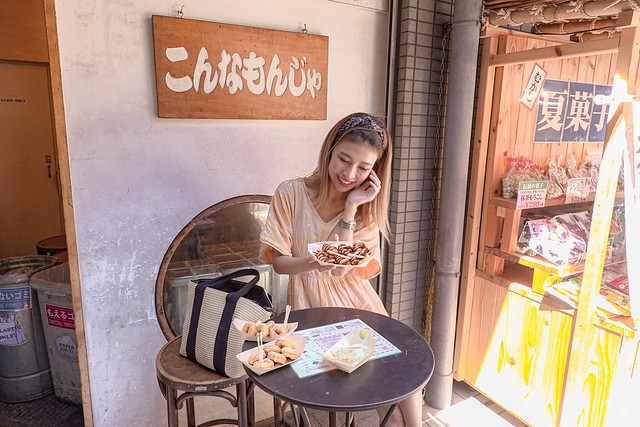
We stopped by the famous little shop “Konnamonja” for its tofu-made sweets, including tofu-donuts (really good!!) and my favorite Yuba sashimi.
Arashiyama 嵐山
Nearest station: Hankyu Arashiyama Station
Yeap. Arashiyama was on our itinerary. I know, this is probably one of the most crowded attractions in the entire Japan, along with Harajuku and Shibuya.

We have arrived at \\\\ using our Hankyu Tourist Pass.
Honestly, I was dreading a little to go back because the last time I visited, I was ambushed by so many made-in-China selfie sticks in my face. However, one can’t deny that Arashimaya is indeed worth the visit being incredibly beautiful full of traditional Kyoto charm, which is what made it so popular in the first place.
Don’t worry! Today I’ll be spilling one of the secrets of touring Arashiyama off the beaten path! (Is there even ff the beaten path at this star attraction of Kyoto?? Yes there is, and even a non-beaten path right inside the bamboo grove!!).

Was it the summer heat? This tourist circus looked completely uncrowded compared to all the photos I’ve seen. Maybe it is not such a bad idea to visit Kyoto in summer after all. Even the famed Togetsukyo Bridge looked empty!
So here’s the secret – invest in a Jinrikisha ride.

Jinrikisha – a rickshaw generally pulled by young, dark lads who would charm you with their good looks and machoness. I used to avoid them because I felt like it’s very much a tourist trap and boy, the rides don’t come cheap.
But think about it – under the summer heat, lots of walking, and the risk of getting lost or trapped in a tourist circus – it’s worth it.
The bonus??

You get to have Insta-enviable pictures such as this one. Taken by your hunku shafu.

This is how! There’s a special lane in the Arashiyama bamboo groove that only rickshaws are allowed to enter. It’s a private property so you won’t be contesting with 8271583milion other tourists for a photo op.

Also, I can’t believe how many beautiful temples there are in the area that’s still pretty much unexplored. And your shafu will know them all.

Almost unbelievable that we are in Arashiyama.

So tranquil and quiet, and perfectly traditional, this is the perfect Kyoto I had in my mind.
The rickshaw service is by EBISUYA with branches all over Japan (imagine the amount of ikemen they hired XD), from Hokkaido to Kyushu.
Chasanraku 茶三樂
I rarely recommend dessert places, because honestly I’m a little tired of sweets that are made for the “grams”, but Chasanraku’s kakigoori, a stylish teahouse in Arashiyama was a 5-star for me.

Already extremely popular with the locals, we arrived the unassuming building with quite a crowd waiting in line to enter the cafe.

When I finally entered the shop, my head was fuzzy after a whole afternoon of outdoor activities under Kyoto’s notorious summer heat, but this Matcha Espuma Kakigoori (shaved ice) instantly made up for it.
It’s difficult to take a good photo of this delightful cooling treat, in fact I would recommend NOT taking any photo at all and just dive right in to the fluff as light as freshly fallen snow. I’m not even joking. No kakigoori is ever as fluffy as this it was almost airy, and the sweetness was barely there, hence the syrup on the side if you have a sweet tooth.
Honestly I thought it was pretty tasteless at first, but soon I understand why it was so.

You see, there’s another type of kakigoori of Mitarashi Black tea flavor, I recommend ordering two at once. This Mitarashi Black Tea was favored by everyone and it was gone in minutes.
How do I even describe it – admittedly I love my sweet stuff savory (but hate it the other way round), be it salted caramel or even shoyu ice cream. Mitarashi is a given as it is glazed in sweet soy sauce, but what made it so unique was its dried miso sheet that holds the dango in place. It was like the Japanese equivalent of salted caramel. It was so, so good.
So, back to the Matcha Espuma version. I never liked shaved ice because the syrups were always way too sweet and it’s just kinda gross when the ice start to melt and all you are eating is cold diluted syrup water. But not the Matcha Espuma Kakigoori. When it starts to dissolve, it was like drinking ice-cold matcha. And I understood why the sweetness had to be that minimal – it complements other desserts. Order both and you will be alternating between enjoying a sweet and savory treat and drinking ice cold matcha that’s also a dessert. I think it was genius.
Umeda Hanshin Snack Park
If you stay near Umeda station, here’s a place you can go for quick, affordable gourmet! Even though it says “snack”, the food at Hanshin Snack Park, an underground stand-up eatery at Hanshin Department Store, Umeda Station are surprisingly filling! And you can even buy some food items for one coin (JPY500).
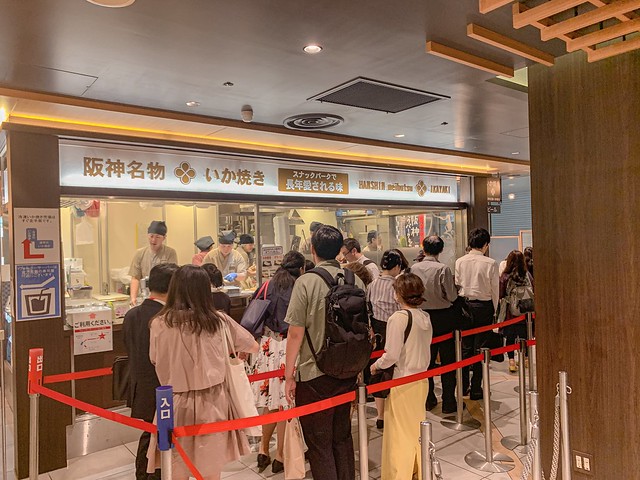
The most popular stall is “ikayaki“, a Hanshin Meibustu – Hanshin famous specialty, which is made of flour knead with squid and dashi and grilled to a fragrant finish. The cheapest ikayaki is as low as JPY152!! It’s the perfect snack to go. Do expect some queue but it moves really quick 🙂

The special thing about this food court is that there’s no chair so everyone stands around the table and eat. Enjoy “tachigui” – “eat standing up” Japanese culture here in Osaka!

There’s also Uogashi Nipponichi, a nationally popular standing sushi bar, one of my favorite too.
Fill your tummy up at this quick, casual eatery full of gourmet choices if you are lazy to head out to search and dine in a proper restaurant.
DAY 5: MINOH & IKEDA (箕面&池田)
Think you have seen Osaka?
Minoh Waterfall 箕面滝
Nearest train station – Hankyu Minoh Station.

Well, this, is Osaka, too.
Other than sky-high buildings lined along the urban sprawls, colorful signboards and all that, Osaka has a serene face of abundant nature too. Minoh waterfall is located just 15km away from city center, and it’s the most popular in summer for recreational activities (I saw many families with children catching fishes in the river, and elderly jogging), and autumn when all the maples turn flaming red.
There are over 2500 waterfalls in Japan and Minoh is chosen as one of the top 100.
Fall season is so well loved by the locals that they have created a specialty “Momiji Tempura” – maple leaves deep fried in batter. You can eat it no natter the season, a perfect snack to fuel you through the long walks!

Bonus! There’s a public footbath located right at the station, while waiting for your train, give your feet a rewarding treat for all that walking! Each entry is only JPY150 which comes with an original towel.
Cup Noodles Museum Osaka Ikeda
Nearest Station: Ikeda Station

300 million instant noodles are consumed every day around the world, and this is all thanks to the very, very important man who has changed the world forever – Ando Momofuku.
Many people know about the Cup Noodle Museum by Nissin in Yokohama but there’s one in Osaka too!

I’m such a fan of Nissin, especially after knowing the story of its founder, Ando Momofuku and his life story. His motto – “Never too late”, speaking of his own experience of inventing the world-changing instant noodle at the age of 48 in a mission to end world hunger with a food that’s super simple to prepare, and reinvented space noodle for astronauts at the age of 95.
Junya and Sakura loves Nissin’s noodles too, and for anyone who chastise me for letting my children eat unhealthy instant food, I always tell them with a smile – Ando Momofuku ate chicken ramen (his very first invention) every single day until the day he died at 96 and believed that it was his secret to his healthy, long life.
Bonus: We also received a special gift from Cup Noodles Museum as Hankyu Tourist Pass holders! As mentioned earlier, Kintetsu Rail Pass has lots of special benefits, it goes the same for Hankyu Tourist Pass as well! More details over at this page.
Hotel New Hankyu Osaka
Nearest Station: Umeda Station

On the last day we stayed over at Hotel New Hankyu Osaka, which is located right at Umeda Station. It makes a great accommodation for your final day as there’s a limousine bus station that takes you to Kansai Airport. Otherwise, trains are also easily accessible from Umeda Station.

View from my room. As you can see, it’s in the heart of the shopping district, so if you still have some luggage space, you know what to do…
Hankyu Beauty Studio

Pop by the Hankyu beauty Studio located right next to the airport limousine bus station. They have specialty pop up store from time to time, so you can try out and shop for your fav cosmetic products before the bus arrives!

That’s all for this time.
So here is the recap of each passes we used for this trip:
Kintetsu Rail Pass
For Kintetsu, there are 4 types of passes and we used Kintetsu Rail Pass Plus which allows you to travel 5 days of unlimited rides on of course all Kintetsu Line, Iga Tetsudo Line, Nara Kotsu Bus, Mie Kotsu Bus and Toba Kamome Bus services in the Ise-Shima area. You can purchase it online here.
For more info, head to their website!
Hankyu Tourist Pass
Get unlimited train travel in Osaka, Kyoto and Kobe! You can purchase it online here.
Hanshin Tourist Pass
Get unlimited rides along the Hanshin Electric Railway lines for one whole day. You can purchase it online here.
Here is the video of our trip!
Thanks so much for your time reading this super long blog post and I hope you will have fun in Kansai, and enjoy some savings from using your passes!


